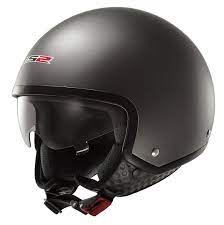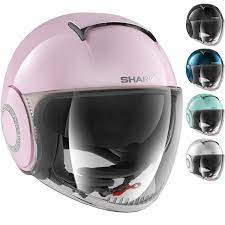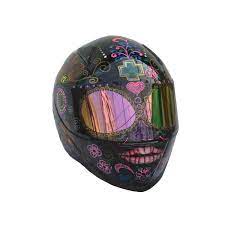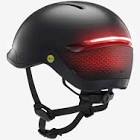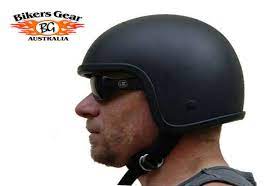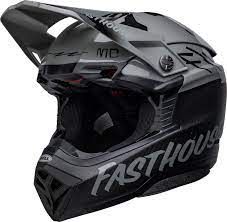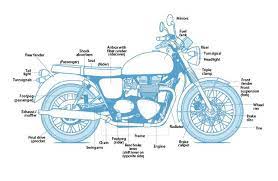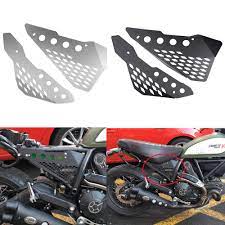Enhancing Safety and Visibility: The Importance of a Motorcycle Helmet Visor

The Motorcycle Helmet Visor: Protecting You on the Road
When it comes to motorcycle safety, one of the most crucial pieces of equipment is the helmet. It serves as a shield, protecting the rider’s head from potential injuries during accidents. While helmets are designed to provide overall protection, there is one specific component that plays a vital role in enhancing visibility and safeguarding riders against various elements – the motorcycle helmet visor.
The visor, often made of durable polycarbonate material, is the clear shield that covers the front opening of the helmet. Its primary function is to protect the rider’s eyes from wind, dust, debris, insects, and other potentially hazardous objects encountered while riding. Additionally, it acts as a barrier against raindrops and harmful UV rays from the sun.
One of the key advantages of a well-designed visor is its ability to maintain clear visibility in different weather conditions. Whether it’s bright sunlight or heavy rain, a high-quality visor with anti-fog and anti-scratch properties ensures that riders can see clearly without compromising their safety.
Furthermore, modern motorcycle helmet visors often come with additional features to enhance functionality. Some visors have built-in sunshades or tinted options that can be adjusted according to lighting conditions. This feature reduces glare and provides added comfort during rides in bright sunlight.
Replacing or upgrading your helmet visor regularly is essential for maintaining optimal safety standards. Over time, visors can become scratched or damaged due to regular use or accidental impacts. A scratched visor can impair visibility and pose risks on the road. Therefore, it’s crucial to inspect your visor regularly and replace it if necessary.
Cleaning and maintaining your helmet visor properly also contribute to its longevity and effectiveness. Using mild soapy water or specialized cleaning solutions designed for helmet visors will help remove dirt and grime without damaging its surface. Avoid using abrasive materials or harsh chemicals that could compromise its integrity.
In some regions, it is mandatory to have a helmet visor while riding a motorcycle. However, even if it’s not required by law in your area, wearing a helmet with a visor is strongly recommended for your safety and protection.
Remember, the visor is an integral part of your helmet and should never be compromised. Always choose a reputable brand that adheres to safety standards and regulations. Invest in a quality helmet with a reliable visor that suits your riding style and preferences.
In conclusion, the motorcycle helmet visor serves as more than just a shield against wind and debris. It plays a crucial role in enhancing visibility, protecting riders from various elements, and ensuring their safety on the road. By understanding the importance of this component and taking proper care of it, motorcyclists can enjoy safer rides while exploring the open road.
8 Essential Tips for Maintaining Your Motorcycle Helmet Visor
- Always make sure your visor is securely closed before you ride.
- Regularly check that the visor is free from scratches and dirt, as this can impair visibility when riding.
- Make sure the visor is correctly fitted to the helmet, and that it doesn’t move around or come off when in use.
- Consider using a tinted visor in bright sunlight, as this will reduce glare and improve visibility on the road.
- If possible, opt for a scratch-resistant visor which will help keep it clear for longer periods of time without needing to be replaced regularly.
- Ensure that your helmet has a quick-release system so you can easily remove or replace the visor if necessary whilst out on the road.
- Make sure to clean your visor regularly with a soft cloth and non-abrasive cleaner, as this will help keep it clear of dirt and debris which can obscure vision when riding at speed over long distances .
- Always store your helmet with its visor open to avoid any damage being caused by pressure or condensation build-up inside the helmet
Always make sure your visor is securely closed before you ride.
Motorcycle Helmet Visor: Securely Closed for a Safe Ride
When it comes to riding a motorcycle, safety should always be the top priority. One essential tip to remember before hitting the road is to ensure that your helmet visor is securely closed. This simple action can make a significant difference in your safety and overall riding experience.
Closing your helmet visor properly serves multiple purposes. Firstly, it provides protection against wind, dust, debris, and insects that can impair your vision and distract you while riding. By keeping the visor closed, you shield your eyes from potential hazards, ensuring a clear line of sight throughout your journey.
Moreover, a securely closed visor acts as a barrier against weather conditions. Whether it’s raindrops or strong winds, having a tightly shut visor helps keep you dry and comfortable during adverse weather situations. It prevents water from obstructing your vision or wind from causing discomfort while riding at higher speeds.
In addition to protecting against external elements, a closed visor also plays a crucial role in safeguarding your eyes from harmful UV rays. Prolonged exposure to sunlight without proper protection can lead to eye strain and fatigue. By keeping the visor securely closed, you minimize the risk of sun glare and protect your eyes from potential damage caused by UV radiation.
It’s important to develop the habit of checking and ensuring that your helmet visor is securely closed before every ride. Take a moment to inspect it for any cracks or damages that may compromise its integrity. If you notice any issues with the visor or its mechanism, it’s advisable to have it repaired or replaced promptly.
Remember, wearing a helmet with an open or improperly secured visor not only puts you at risk but also violates safety regulations in many jurisdictions. It’s not worth compromising on safety for convenience or style. Always prioritize closing the visor properly before embarking on any motorcycle adventure.
In conclusion, making sure that your helmet visor is securely closed before you ride is a small yet crucial step towards ensuring your safety on the road. By doing so, you protect your eyes from external elements, maintain clear visibility, and shield yourself from potential hazards. So, before you rev up that engine, take a moment to double-check and close your visor securely. Safe travels await you!
Regularly check that the visor is free from scratches and dirt, as this can impair visibility when riding.
Ensuring Clear Vision: Regularly Checking Your Motorcycle Helmet Visor
When it comes to riding a motorcycle, clear visibility is of utmost importance. The ability to see clearly on the road is crucial for safety and overall riding experience. One essential aspect that riders often overlook is the condition of their motorcycle helmet visor.
Regularly checking your helmet visor for scratches and dirt is a simple yet effective tip that can significantly impact your visibility while riding. Over time, visors can accumulate scratches from regular use or accidental impacts. These scratches may seem minor, but they can create glares and distortions that impair your vision, especially when faced with bright lights or sunlight.
Dirt and debris can also accumulate on the visor, further hindering your ability to see clearly. Dust particles, insects, and even raindrops can obstruct your vision, making it difficult to react quickly to potential hazards on the road.
To ensure optimal visibility, it’s important to make it a habit to regularly inspect your helmet visor. Take a few moments before each ride to examine the surface for any visible scratches or signs of dirt. If you notice any scratches or smudges, address them promptly.
Cleaning your visor regularly is essential in maintaining clear visibility. Using mild soapy water or specialized cleaning solutions designed for helmet visors will help remove dirt and grime without damaging the surface. Be sure to follow the manufacturer’s instructions for cleaning and avoid using abrasive materials that could scratch the visor.
By taking a proactive approach in checking and cleaning your motorcycle helmet visor, you ensure that you have an unobstructed view of the road ahead. This not only enhances safety but also allows you to fully enjoy the exhilaration of riding without any unnecessary distractions.
Remember, regular maintenance of your helmet visor should be part of your overall safety routine as a responsible rider. By keeping it free from scratches and dirt, you are taking an important step towards ensuring clear vision and a safer riding experience.
So, before you embark on your next motorcycle adventure, take a moment to inspect your visor. Keep it clean, free from scratches, and enjoy the road with confidence, knowing that you have taken the necessary steps to maintain optimal visibility while riding.
Make sure the visor is correctly fitted to the helmet, and that it doesn’t move around or come off when in use.
Securing Your Safety: Properly Fitting Your Motorcycle Helmet Visor
When it comes to motorcycle safety, every detail matters. One important aspect that often goes overlooked is ensuring that your helmet visor is correctly fitted to your helmet. A properly fitted visor not only enhances visibility but also ensures that it stays in place during your rides, providing you with the utmost protection.
To begin, make sure you have the correct size of visor for your helmet model. Different helmets may have varying sizes and attachment mechanisms, so it’s crucial to choose a visor that is compatible with your specific helmet. Refer to the manufacturer’s guidelines or consult a professional if you’re unsure about the right fit.
Once you have the correct visor, carefully attach it to your helmet according to the manufacturer’s instructions. Most visors utilize a simple mechanism involving hinges or clips for easy installation. Take your time and ensure that the visor is securely fastened without any loose parts.
Next, test the fit of the visor by gently moving it up and down and side to side. It should sit snugly against the front opening of your helmet without any excessive movement. If you notice any wobbling or looseness, double-check the attachment points and make necessary adjustments.
During your rides, vibrations and wind pressure can put stress on the visor. To prevent it from accidentally coming off or shifting while in use, always ensure that it is securely locked into place before hitting the road. Some helmets have additional locking mechanisms like quick-release systems or locking levers that provide extra security – familiarize yourself with these features if your helmet has them.
Regularly inspecting and maintaining your helmet visor is also important for its proper functioning. Check for any signs of wear and tear such as cracks, scratches, or loose parts. If you notice any damage or deterioration, replace the visor immediately as compromised integrity can compromise your safety.
Remember, a well-fitted and secure visor is not only crucial for visibility but also for protecting your eyes from debris, wind, and other elements. By taking the time to ensure that your visor is correctly fitted to your helmet and doesn’t move around or come off during use, you can ride with confidence, knowing that you have taken an essential step towards safeguarding yourself on the road.
Stay safe and enjoy your rides with a properly fitted motorcycle helmet visor.
Consider using a tinted visor in bright sunlight, as this will reduce glare and improve visibility on the road.
Enhancing Visibility: The Benefits of a Tinted Motorcycle Helmet Visor
When it comes to riding on a sunny day, the bright sunlight can sometimes pose challenges for motorcyclists. Glare from the sun can hinder visibility and make it difficult to focus on the road ahead. However, there is a simple yet effective solution to combat this issue – using a tinted visor on your motorcycle helmet.
A tinted visor offers several advantages when riding in bright sunlight. By reducing glare, it allows riders to maintain clear vision and enhances their overall safety on the road. The tint acts as a filter, minimizing the intensity of sunlight that reaches your eyes, making it easier to see without squinting or straining.
Improved visibility is not the only benefit of using a tinted visor. It also provides added comfort during rides in sunny conditions. The tint helps shield your eyes from excessive brightness, preventing eye fatigue and allowing you to stay focused for longer periods.
It’s important to note that not all tinted visors are created equal. Different tints offer varying levels of light transmission, so it’s essential to choose one that suits your specific needs and preferences. Some visors have adjustable tints, allowing you to customize the level of darkness according to changing lighting conditions.
However, it’s crucial to exercise caution when using a tinted visor in low-light situations or at night. A heavily-tinted visor may significantly reduce visibility in darker conditions, making it unsafe for riding. In such instances, it’s advisable to switch back to a clear or lightly-tinted visor for optimal visibility.
Before setting off on your motorcycle adventure, always check local regulations regarding helmet visors. Some regions have restrictions on the level of tint allowed for safety reasons. Ensure that you comply with these regulations while still enjoying the benefits of reduced glare and improved visibility.
In conclusion, using a tinted motorcycle helmet visor in bright sunlight can greatly enhance your riding experience. By reducing glare and improving visibility, it allows you to navigate the road with greater confidence and comfort. However, remember to choose the appropriate tint level and adhere to local regulations for optimal safety. So, gear up with a tinted visor and enjoy your rides under the sun while keeping your vision clear and protected.
If possible, opt for a scratch-resistant visor which will help keep it clear for longer periods of time without needing to be replaced regularly.
Choosing a Scratch-Resistant Motorcycle Helmet Visor: Ensuring Long-lasting Clarity
When it comes to motorcycle helmet visors, one important tip to consider is opting for a scratch-resistant option. A scratch-resistant visor can significantly prolong its lifespan and keep it clear for longer periods of time, reducing the need for frequent replacements.
Riding a motorcycle exposes the helmet visor to various elements that can potentially cause scratches. Dust, debris, insects, and accidental impacts are just a few examples of what riders may encounter on the road. These scratches not only obstruct visibility but can also compromise the structural integrity of the visor.
By investing in a scratch-resistant visor, riders can enjoy several benefits. Firstly, it ensures clear visibility throughout their rides. Scratches on the visor can create glares and distortions that impede a rider’s ability to see clearly, compromising their safety on the road. A scratch-resistant visor minimizes this risk by maintaining an unobstructed view.
Secondly, choosing a scratch-resistant option saves riders from the hassle and expense of frequently replacing their helmet visors. Regular wear and tear are inevitable, but a scratch-resistant visor withstands minor abrasions better than standard ones. This durability translates into long-term cost savings as riders won’t need to replace their visors as frequently.
To maximize the benefits of a scratch-resistant visor, it’s essential to care for it properly. Cleaning the visor with mild soapy water or specialized cleaning solutions designed for helmet visors helps remove dirt without causing damage. Additionally, storing the helmet in a protective bag or case when not in use prevents unnecessary scratches from accidental contact with other objects.
When purchasing a motorcycle helmet with a scratch-resistant visor, ensure that you choose from reputable brands known for their quality and adherence to safety standards. Look for helmets that explicitly mention scratch resistance as one of their features.
In conclusion, opting for a scratch-resistant motorcycle helmet visor is a wise choice for riders seeking long-lasting clarity and enhanced safety. By investing in this type of visor, riders can enjoy undistorted visibility, reduce the need for frequent replacements, and ultimately ride with greater peace of mind. Remember to care for the visor properly to maintain its scratch-resistant properties and extend its lifespan even further.
Ensure that your helmet has a quick-release system so you can easily remove or replace the visor if necessary whilst out on the road.
The Importance of a Quick-Release System for Your Motorcycle Helmet Visor
When it comes to motorcycle helmet visors, one important feature that riders should consider is a quick-release system. This mechanism allows you to easily remove or replace the visor while you’re out on the road, providing convenience and flexibility in various situations.
Imagine you’re riding on a sunny day, and suddenly dark clouds gather overhead, bringing heavy rain. In such instances, being able to quickly swap your clear visor for a tinted or anti-fog one can significantly improve your visibility and overall riding experience. A quick-release system enables you to adapt to changing weather conditions swiftly and safely.
Not only does a quick-release system offer practicality during unexpected weather changes, but it also comes in handy when you need to clean or replace your visor. Over time, visors can accumulate dirt, bugs, or scratches that may impair your vision. Being able to remove the visor easily allows for thorough cleaning or replacement with minimal effort.
Moreover, if you wear prescription glasses or sunglasses underneath your helmet, a quick-release system makes it easier to switch between different lenses without having to remove the entire helmet. This feature ensures that you can maintain optimal vision and ride comfortably while accommodating your specific eyewear needs.
When shopping for a motorcycle helmet with a quick-release system, ensure that it is secure and reliable. Look for helmets from reputable brands that prioritize safety standards and design their mechanisms with durability in mind. A well-designed quick-release system should be easy to operate even while wearing gloves.
Remember that proper maintenance is crucial for the longevity of both the helmet and its quick-release system. Regularly inspect the mechanism for any signs of wear or damage and address any issues promptly. Additionally, follow manufacturer guidelines regarding cleaning and lubrication to ensure smooth operation.
In conclusion, having a motorcycle helmet with a quick-release system for the visor offers numerous benefits while out on the road. It provides the flexibility to adapt to changing weather conditions, facilitates easy cleaning or replacement of the visor, and accommodates specific eyewear needs. By investing in a helmet with a reliable quick-release system and maintaining it properly, riders can enjoy enhanced convenience and safety during their journeys.
Make sure to clean your visor regularly with a soft cloth and non-abrasive cleaner, as this will help keep it clear of dirt and debris which can obscure vision when riding at speed over long distances .
Maintaining Clear Vision: Cleaning Your Motorcycle Helmet Visor
When it comes to riding a motorcycle, clear vision is vital for safety on the road. One essential tip to ensure optimal visibility is to regularly clean your helmet visor. By doing so, you can keep it free from dirt and debris that can obscure your vision, especially during long rides at high speeds.
To clean your motorcycle helmet visor effectively, follow these simple steps. First, gather a soft cloth or microfiber towel that won’t scratch the surface of the visor. Avoid using abrasive materials like rough sponges or paper towels, as they can damage the visor’s clarity.
Next, choose a non-abrasive cleaner specifically designed for helmet visors. These cleaners are formulated to remove dirt and grime without leaving streaks or damaging the surface. Avoid using household cleaners or chemicals that may harm the visor’s protective coating.
Start by gently wiping the visor with a damp cloth to remove any loose particles or residue. Then apply a small amount of the non-abrasive cleaner to another clean section of the cloth. Using gentle circular motions, wipe the entire surface of the visor, paying extra attention to any stubborn spots.
After cleaning, rinse out any remaining cleaner from your cloth and dampen it with clean water. Wipe down the visor once more to remove any traces of cleaner. Finally, use a dry section of the cloth or a separate dry cloth to gently buff away any moisture and leave your visor sparkling clear.
Regularly cleaning your helmet visor is crucial for maintaining optimal visibility while riding. Dirt and debris can accumulate over time and diminish your ability to see clearly, especially when riding at high speeds over long distances. By incorporating this simple cleaning routine into your maintenance routine, you can enjoy safer rides with unobstructed vision.
Remember to inspect your helmet visor regularly for signs of wear or damage. If you notice any deep scratches or cracks, it’s essential to replace the visor promptly. A compromised visor can compromise your safety on the road.
In conclusion, keeping your motorcycle helmet visor clean is a small yet vital step in maintaining clear vision while riding. By using a soft cloth and non-abrasive cleaner, you can remove dirt and debris that may obstruct your view. Prioritizing regular cleaning will help ensure safer rides and allow you to fully enjoy the open road.
Always store your helmet with its visor open to avoid any damage being caused by pressure or condensation build-up inside the helmet
Proper Helmet Care: Storing Your Helmet with Visor Open
When it comes to caring for your motorcycle helmet, there is one simple tip that can help preserve its longevity and functionality – always store your helmet with its visor open. This small action can make a significant difference in preventing potential damage caused by pressure or condensation build-up inside the helmet.
Why is it important to store your helmet with the visor open? Let’s delve into the reasons behind this practice.
Firstly, storing your helmet with the visor open helps alleviate any pressure that may accumulate inside. When a helmet is closed for an extended period, especially in humid conditions, heat and moisture can get trapped inside. This trapped air can create pressure, potentially affecting the structural integrity of the helmet over time. By leaving the visor open, you allow air circulation that helps equalize internal and external pressures, reducing any potential risks.
Moreover, condensation build-up can occur when a closed helmet is exposed to temperature changes or high humidity levels. Moisture can accumulate on the inner surface of the visor or inside the padding. This moisture not only affects visibility but also creates an environment conducive to bacterial growth and unpleasant odors. By leaving the visor open when storing your helmet, you allow proper ventilation and help prevent condensation from forming.
To ensure effective implementation of this tip, find a clean and dry area for storing your helmet. Avoid places prone to extreme temperature fluctuations or excessive humidity levels, such as basements or garages without climate control. Ideally, use a dedicated storage bag or shelf specifically designed for helmets to protect them from accidental impacts or exposure to harmful elements.
Remember that proper maintenance extends beyond storing your helmet with its visor open. Regularly clean both the exterior and interior of your helmet using manufacturer-recommended methods and products. Inspect the visor for any signs of wear or damage and replace it if necessary.
By adopting this simple habit of storing your helmet with the visor open, you contribute to its longevity and maintain optimal safety standards. Preserve the functionality of your helmet, ensure clear visibility, and enjoy your rides with peace of mind.
Always prioritize the care and maintenance of your motorcycle helmet. It is an investment in your safety and protection on the road.

